Chapter Three: Small Business Management – Business Studies Form Two
Introduction
Managing a business is about making intelligent choices, such as what to sell, how much to charge, how to reach your customers, and how to keep records of finances. In this chapter, you will learn about the concept of small business management, financial and other records keeping, profit and loss calculation for a small business, budgeting, control and administration. The competences developed will enable you to create budgets, calculate profit and loss, and effectively manage a small business of your preference.
Think
A small business without control and a plan.
Activity 1: The school retail shop
Your school is opening a small retail shop to raise money for a school trip. You have been tasked to manage the shop.
Your role: To manage the shop.
Task: How are you going to run the shop? Consider the following:
(a) How will you keep records of the items you buy and sell and the money you make?
(b) How will you decide which items to buy and how much to spend?
(c) How will you set the selling price of items bought?
(d) How will you know if the shop is making a profit or a loss?
(e) What information do you need to make good decisions about the shop?
The concept of small business management
Activity 3.1, which is about the school retail shop, introduces the key ideas for running a small business. These are essential concepts like business management, budgeting, record keeping and calculating profit and loss to generate an income statement. These concepts are explained as follows:
Management
Management is the administration of an organisation’s operations using various effective and efficient methods to achieve its goals. This involves planning, leading, and controlling various resources such as land, labour, capital, and equipment to make decisions, solve problems facing the organisation, and ensure its smooth operation.
Managing small businesses
Managing a small business means monitoring all matters related to the business activities. This includes streamlining various aspects such as decision-making, problem-solving, staff management, and ensuring business profitability. For example, managing a fashion boutique requires handling things like buying, storing, selling clothes and tracking capital and profits.
Remember: Business matters should be kept separate from personal affairs. For example, if the school club owns a small shop, the business income and expenses should be kept separate from the members’ finances.
Functions of business management
Business management involves the process of planning, organising, staffing, directing and controlling business operations. Small business owners or supervisors carry out these functions while activities are taking place to enable the business to achieve its pre-determined goals. The following are the functions of business management:
Planning:
Planning involves determining the course of action the business will take to achieve its goals. It involves thinking and forecasting all critical processes before implementation. Small business owners have to plan their businesses well, such as what goods and/or services to produce, where, when, and how to make them.
Organising:
Organising is a systematic process of coordinating, structuring, and integrating goals and activities to ensure business objectives are realised. Small businesses are involved in arranging, coordinating, and controlling factors of production.
Staffing:
Staffing is finding the right people with the right qualifications for the right job. It is a human resource management function that involves recruiting, selecting, placing, training, and retiring personnel in the business venture. Small business owners are responsible for hiring the right personnel who will perform their tasks effectively and efficiently.
Directing:
Directing involves leading, influencing, and motivating employees to work towards predetermined business goals. The process of directing includes creating a good business environment that encourages employees to do their best. It also involves appreciating employees for a job well done and raising criticism to create a supportive work environment around the assigned work.
Controlling:
Controlling involves monitoring, comparing, and correcting the work performed. Given that it is the last management stage, it further links the planning process. It enables small businesses to monitor and assess activities to achieve business goals.
Activity 2
Visit a nearby small business and gather information from the business owner about:
(a) Importance of planning when managing a small business.
(b) Any three essential things to take care of when managing a small business.
(c) How do they make sure their small business runs smoothly?
(d) Which strategies do they propose to manage a small business?
(e) Analyse the information you have gathered and develop a simple summary.
Financial and other record-keeping for a small business
Record keeping is the systematic process of collecting, organising, and storing information. Simply, it is about writing down essential information about all business activities.
Small business owners have to ensure effective and efficient record-keeping of all business transactions within the business, manually or digitally, for future business reference and analysis.
Record keeping includes tracking and recording all the cash and credit transactions within the business. This includes income and expenses from sales, purchases, electricity bills, transportation costs, workers’ records and other financial transactions in the business.
Small business owners must have financial literacy skills to record business transactions effectively. Cash books, sales day books, and purchases day books are some financial books that small businesses may prepare to have proper daily records of business financial transactions.
Cash book
A cash book is a financial book that records all cash transactions related to purchases and sales in a business. This is where a business owner records every single transaction that happens in the business. Simply, it is a diary of money for business owners.
The cash book includes every money the business owner receives in cash receipts from sales and customer payments. It also consists of every money the business owner spends, such as cash payments for purchases of stock, payment for utilities (electricity, water and telecommunication bills), rent and workers’ salaries.
CASH BOOK FOR A SMALL RETAIL BUSINESS
| Cash receipts | Cash payments | ||||
|---|---|---|---|---|---|
| Date | Particulars | Amount (TShs) | Date | Particulars | Amount (TShs) |
| January 1 | Opening balance | 70,000 | January 2 | Rent | 50,000 |
| January 3 | Sales | 20,000 | January 5 | Electricity and water bill | 6,000 |
| January 4 | Cash from Lulu | 22,000 | January 6 | Stock | 37,000 |
| January 6 | Sales | 12,000 | |||
| January 7 | Sales | 17,000 | January 31 | Closing balance | 48,000 |
| February 1 | Opening balance | 141,000 | 141,000 | ||
Figure 1: A simple cash book for a small retail business
Recording business transactions in a cash book is crucial for a small business owner as it helps to track the business’s daily cash flow. Balancing the cash book regularly enables the business owner to develop a financial plan and budget and detect errors that might have mistakenly occurred.
Exercise 1
On your birthday, you get a total of TShs 52,000 in cash from your parents, grandparents and some of your relatives as a gift. In the meantime, you got back TShs 4,700 that you had given to your friend as a loan. Assume you spent this money buying clothes, went to the cinema and bought snacks for yourself.
(a) Estimate how much you might have spent buying clothes, snacks and going to the cinema.
(b) List all the cash receipts and payments in your notebook.
(c) Create a cash book for your transactions.
Sales day book
A sales day book is a financial book that records all sales transactions made on credit in a business. In this financial book, a small business owner records every good sold without receiving cash from the customer. This financial book helps the business owner keep track of the business’s credit sales.
SALES DAYBOOK FOR A SMALL RETAIL BUSINESS
| Date | Particulars | Description of goods | Amount (TShs) |
|---|---|---|---|
| January 1 | Credit sales to Johnson | 5 kilograms of sugar each at TShs 2,500 | 12,500 |
| January 3 | Credit sales to Farida | 1 piece of Khanga | 7,000 |
| January 4 | Credit sales to Denzel | A half bar of Sungura soap | 1,000 |
| January 6 | Credit sales to Laureen | 4 kilograms of pecs each at TShs 900 | 3,600 |
| Total | 24,100 |
Figure 2: A simple sales day book for a small retail business
Purchases day book
A purchases day book is a financial book that records purchases on credit. In this book, a small business owner records every good bought from a supplier without a cash payment. Purchases day books enable small business owners to keep track of their business’s credit purchases.
PURCHASES DAY BOOK FOR A SMALL RETAIL BUSINESS
| Date | Particulars | Description of goods | Amount (TShs) |
|---|---|---|---|
| January 1 | Credit purchases from Dafu Mills | 25 kilograms of rice each at TShs 2,000 | 50,000 |
| January 3 | Credit purchases from WD Cooking Oil Co. Ltd | 10 liters of sunflower cooking oil each at TShs 2,600 | 26,000 |
| January 4 | Credit purchases from DCS Company | 20 bars of Sungura soap each at TShs 800 | 16,000 |
| Total | 92,000 |
Figure 3: A simple purchases day book for a small retail business
Profit and loss calculation for a small business
Activity 3
Scenario: Assume you own a small business selling cosmetics. Over the last month, you kept a record of all your income (money you earned from selling cosmetics) and expenditure (money you spent to run the business). It is time to determine whether your business made a profit or a loss. Use the information below to answer the questions that follow.
Business data:
Income:
- Sales of petroleum jellies: TShs 200,000
- Sales of hair shampoos: TShs 300,000
- Sales of perfumes: TShs 200,000
- Sales of lipsticks: TShs 150,000
Expenditure:
- Cost of purchasing petroleum jellies: TShs 120,000
- Cost of purchasing shampoos: TShs 180,000
- Cost of purchasing perfumes: TShs 110,000
- Cost of purchasing lipsticks: TShs 60,000
- Rent for your shop: TShs 50,000
- Electricity and water bills: TShs 20,000
- Own salary: TShs 200,000
Questions:
(a) What is your business’s total monthly profit or loss?
(b) If your business made a loss, what changes could you make to make a profit next month?
(c) What have you learned from this exercise about managing a small business?
Steps to determine profit or loss:
- Calculate total income: Add all the money earned from selling petroleum jellies, shampoos, perfumes, and lipsticks.
- Calculate total expenses: Add up all the costs, including purchasing stock of cosmetics (petroleum jellies, shampoos, perfumes and lipsticks), rent, utility bills (electricity and water) and own salary expenses.
- Calculate profit or loss: Subtract the total expenses from the total income. If the result is positive, your business will make a profit. If the result is negative, your business makes a loss.
Preparing an income statement
A small business must prepare an income statement to understand whether it is making a profit or a loss. This financial statement shows a business’s income, expenditures, and overall profit or loss over a specific period. It involves comparing a business’s income and expenditures.
An income statement can also be a simple report showing how much money a business earned (profit) or lost (loss) over a specific time. It helps in assessing the business’s financial performance.
Profit
Profit happens when a business makes more money from selling its products than it spends on running it. In other words, the income is higher than the expenditures.
Loss
Loss occurs when a business spends more money than it earns. This means the expenditures are higher than the income. If the business makes a profit, the owner may retain part of the profit to keep it growing. This is called reinvesting.
To decide if one should reinvest, one needs to look at the business records and see if the business made a profit. Moreover, one needs to look at whether there is an increase in demand for the product and the level of competition surrounding the business. This is why knowing about profit and loss is helpful.
Remember: Regular profit and loss calculations help small businesses, such as school business clubs, decide which projects to continue, improve, or stop. Remember this as you consider starting new businesses in your community or managing existing ones. Always aim to find ways for the business to increase profits and minimise losses.
Exercise 2
- Your school business club started a small project selling homemade snacks. After five months, the club earned TShs 770,000 from sales and spent TShs 490,000 to run the project. Calculate the school business club’s profit or loss.
- Ms Johari plans to establish a small business, with projected operating expenses of TShs 700,000 for the year and revenues from sales of TShs 1,000,000 for one year.(a) What will be the profit or loss?(b) If the business earns TShs 200,000, what will its profit or loss be?
- Suppose your business club decides to reinvest profits from a successful project into expanding the business. What factors should you consider before deciding to reinvest?
Budgeting, control and administration
Activity 4
Imagine you are the head of a family. Like any other family, you earn and spend money. The money you earn is called income, and the money you spend is known as expenses.
(a) List all the possible ways you, as the head of the family, can earn income.
(b) Identify different items a family needs to spend money on. Divide them into two groups: needs and wants.
(c) Imagine your family has a monthly income of TShs 200,000. Decide how much money to allocate for needs and wants.
(d) Create a table with columns for income, needs, and wants, and fill it out with estimated amounts for each category of goods.
(e) How does a budget help a family manage their money?
Budgeting
Budgeting involves preparing a plan for managing money for a particular time. For example, when people plan a birthday party, they list things they need to buy, like food, drinks, and decorations. They also decide how much money they can spend. Budgeting entails allocating funds to meet various expenditures and savings.
In real life, just like when we plan our daily or routine expenses, it is essential to be guided by budgets. Budgets help us plan, while record-keeping helps us track income and expenses accurately. In your student business clubs, whether you are the treasurer or not, it is essential to ensure that the club manages its finances well and reports clearly to all members. These principles will help you become financially responsible and eventually independent.
Understanding the difference between needs and wants in small business is essential for wise spending. Needs are essential expenses to run your small business, while wants are non-essential expenditures. It is advised that your small business needs to take 40 per cent of your net profit while wants to take 20 per cent. The remaining 30 per cent can be saved, and the remaining 10 per cent can be used for personal fulfilment. This approach reduces waste and promotes long-term sustainability by spending money where it will have the most impact.
Needs 40%
- Rent
- Salaries and wages
- Taxes and fees
- Utilities
Wants 20%
- Upgrading technology
- Hiring additional staff
- Marketing and advertising
Savings 30%
- Emergency funding
- Retirement planning
- Debt repayment
Personal use 10%
- Living expenses
- Health and wellness
- Travel for vacations
- Shopping
Figure 4: Wise spending for potential and actual small business owners
Budgeting is planning and managing income and expenses to ensure your small business stays financially healthy. It helps you control spending, set financial goals, and make informed decisions by clearly showing your financial situation. By tracking income and expenses, you can identify areas where you may need to cut costs or invest more and plan for savings or emergencies. Regularly reviewing and adjusting your budget allows you to adapt to changes and maintain a stable financial footing, ultimately leading to more sustainable business growth.
Monthly Budget
| Items | Budget amount | Actual amount | Budget variance | Notes |
|---|---|---|---|---|
| Income (TShs) | ||||
| Sales income | 400,000 | 350,000 | -50,000 | Fall of unit price |
| Other income | 100,000 | 150,000 | 50,000 | Contribution from new partner |
| Total | 500,000 | 500,000 | 00 | Accurate forecasting |
| Expenses (TShs) | ||||
| Rent | 100,000 | 100,000 | 00 | Accurate forecasting |
| Salaries and wages | 50,000 | 50,000 | 00 | Accurate forecasting |
| Utilities | 10,000 | 10,000 | 00 | Accurate forecasting |
| Online advertising | 10,000 | 10,000 | 00 | Accurate forecasting |
| Insurance | 20,000 | 20,000 | 00 | Accurate forecasting |
| Total operating expenses | 190,000 | 190,000 | 00 | Accurate forecasting |
| Taxes | 30,000 | 30,000 | 00 | Accurate forecasting |
| Business License | 30,000 | 30,000 | 00 | Accurate forecasting |
| Total expenses | 440,000 | 440,000 | 00 | Accurate forecasting |
| Total income TShs 500,000 | ||||
| Total expenses TShs 440,000 | ||||
| Projected profit TShs 60,000 | ||||
| Savings | ||||
| Emergency fund | 20% of the profit | TShs 12,000 | Not applicable | Accurate forecasting |
| Retirement fund | 30% of the profit | TShs 18,000 | Not applicable | Accurate forecasting |
| Further investment | 40% of the profit | TShs 24,000 | Not applicable | Accurate forecasting |
| Others (Personal use) | 10% of the profit | TShs 6,000 | Not applicable | Accurate forecasting |
Figure 5: A budget sample for a small retail business
Importance of budgeting
Budgeting helps a business to manage its finances better. It is an essential tool for the success of every small business. The following is the importance of budgeting:
- Financial management and stability: Budgeting creates a clear roadmap for the business by forecasting its income and expenses. This helps to ensure adequate cash flow, minimising overspending or unnecessary debts.
- Making an informed choice: Budgeting enables a business to make informed pricing or investment decisions, which helps to prioritise spending.
- Setting financial targets: Budgeting enables a business to set clear financial targets and evaluate the progress towards attaining them by comparing the actual performance to the budget, which reveals opportunities for improvement.
- Growth planning: Budgeting enables small business owners to allocate resources effectively and plan long-term growth strategies.
Control
Control means sticking to the plan. One must check the prices before buying things to avoid spending too much. Financial control is very important when managing a small business. It includes receipts for all expenses and regular budget reviews, which can enhance accountability.
Administration
Administration is like keeping track of everything. It includes writing down what the business has bought, how much it costs, and how much money is left. This helps the business to stay organised and on track.
Like planning a birthday party, when you create a budget for your school, business club or family, you must control your spending and keep good records. Therefore, control is like watching over something to ensure it goes as planned. For example, if you save money to buy a toy, you control your spending by not buying unnecessary things. Administration is about keeping records and organising things. It is like writing down what you spend and what you have left. This helps you keep track of your money.
Exercise 3
- The Mwakipesile family consists of Mr and Mrs Mwakipesile and their three children. Mr Mwakipesile works as a teacher and earns TShs 1,200,000 per month. Mrs Mwakipesile operates a small grocery store from home and earns an average of TShs 800,000 per month. The family faces challenges from rising prices of basic commodities, school fees for their children, unexpected expenses like medical bills and saving for future needs (for example, children’s education and retirement).Questions:(a) How can the Mwakipesile family create a budget to effectively manage their income and expenditures?
(b) What strategies can they use to save money?
(c) How can they prioritise their needs and wants within their budget?
- Shule Yetu Club is a famous business club at Maziwa Secondary School. The business club aims to promote environmental conservation and community development. The business club has a budget of TShs 200,000 per year from school contributions and fundraising activities. However, the club faces challenges in balancing the club’s activities with limited funds, making decisions about spending priorities, ensuring transparency and accountability in financial management and generating additional income through fundraising.Questions:(a) How can the Shule Yetu Club create a detailed budget for a year?
(b) What strategies can the club use to get funds to implement its budget and achieve its goals?
(c) How can the club effectively monitor its income and expenses?
(d) What measures can the club implement to ensure financial accountability?
Skills lab activity
As active members of the business club, create a budget for your business that will be presented to the rest, explaining how it will be implemented and supporting the club’s activities moving forward.
Project activity
Create a budget, track your financial records, calculate your profits and losses, and reflect on your experience. Use your business club as a platform to work on this project, and seek feedback from your peers and teacher along the way.
Challenge: Turn your idea into a small business.
Steps:
(i) Choose your product or service by picking something you can sell or do for others.
(ii) Create a simple plan for operating your business. Think about what you will need to get started, how much it will cost, and how much you will charge.
(iii) Set a budget by figuring out how much money you need to start your business. This includes the cost of supplies, materials, or any other expenses.
(iv) Record all the money you earn and spend. Use a notebook or a simple spreadsheet.
(v) Calculate your profit by subtracting your expenses from your income.
(vi) Think about what worked and what did not. How can you improve your business next time?
Remember: Start small and simple. Have fun and be creative. Learn from your experience.
Chapter summary
- Management is the process of overseeing an organisation’s operations using various effective and efficient methods to ensure that the organisation achieves its goals.
- Good business management enables the owners to achieve their predetermined goals.
- Planning, organising, staffing, directing, and controlling are the functions of management.
- Small businesses can calculate their profit and loss by comparing income and expenditures and preparing income statements.
- Preparation of a budget in the business enables the business to estimate both revenues and expenditures.
- Efficient record-keeping is essential for accurate financial reporting and decision-making. Organising financial information helps in tax compliance and evaluating business performance.
Revision exercise
Choose the correct answer among the given alternatives in questions 1 to 5 and write its letter in your exercise book.
1. Which of the following functions of management deals with recruiting, placing, training, and terminating employees?
2. Mr Moses has been operating his small business of selling fruits for almost two years. He decided to hire one person to assist him. Which function of management did he apply?
3. The Form Two business club members at Mwembeni Secondary School have been preparing income statements at the end of each year. What makes them prepare it?
4. Mr Joel’s business earned TShs 200,000 from sales while he used TShs 20,000 to run the business. What was Mr Joel’s profit or loss?
5. Latifa owns a small business that deals with horticulture activities. She has been running her business without planning, managing, or controlling its activities. What does her business lack?
6. Match the items from Group A with those in Group B by writing the letter of a correct option in Group B that corresponds to an item in Group A
| Group A | Group B |
|---|---|
| (i) Making sure one sticks to the budget. | A. Budget |
| (ii) The process of overseeing and coordinating business activities. | B. Reinvestment |
| (iii) Money earned from selling goods or services. | C. Expenses |
| (iv) A plan for managing money by keeping records of income and expenses. | D. Control |
| (v) Money spent on running a business. | E. Administration |
| (vi) A business owned and operated by one or a few people. | F. Profit |
| (vii) The difference between income and expenses when income is more excellent than expenses. | G. Small business |
| (viii) Using profits to expand or improve a business. | H. Loss |
| (ix) The difference between income and expenses when expenses exceed income. | I. Revenue |
| (x) The activities involved in running a business, such as paperwork and record-keeping. | J. Management |
| K. Staffing | |
| L. Organise |
7. Form Two business club members at Bondeni Secondary School want to start a small business. They have approached you to assist them in calculating their business’s profit and loss. Will you assist them? How?
8. Imagine you own a small business in your community. How will financial and other records keeping, profit and loss calculation and business management help your business thrive?

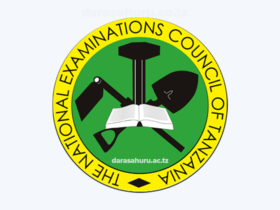
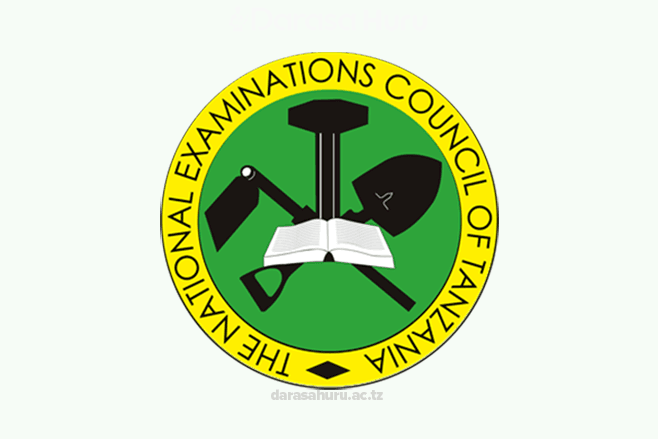

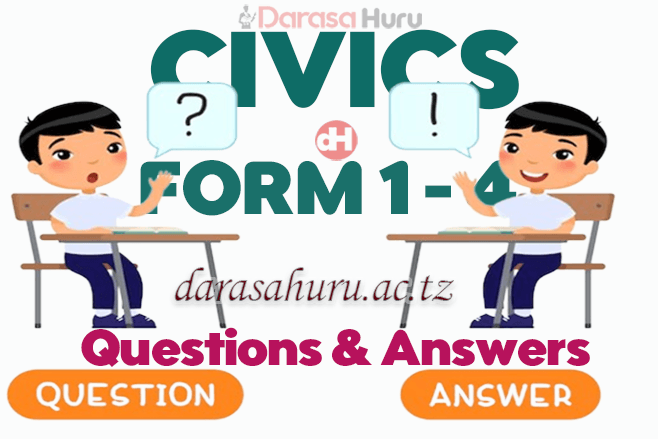



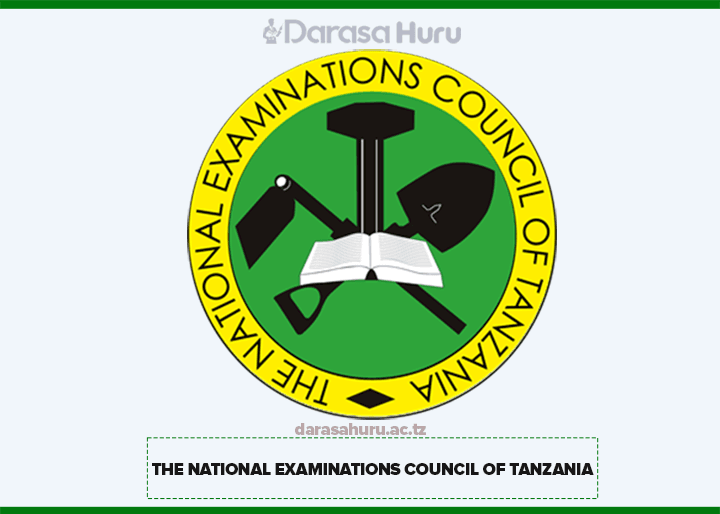

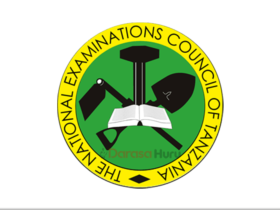




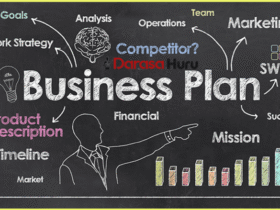















Leave a Reply